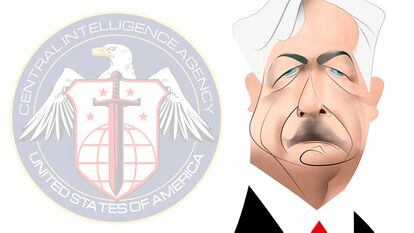Luis Grañena
Not even the most inspired
Homeland
screenwriter
, the veteran series on American espionage, would have been able to imagine the scene. Kabul, August 23. In the midst of a rout of Westerners and Afghans, the CIA director meets with the political leader of the Taliban, who have just seized power two decades after being forcibly evicted. The high-ranking official - one of the key positions in the US Administration - in front of a bearded man who flags a number of fanatics ready to impose his dark vision of the world; an interlocution so uneven, so forced, that it sounds like a fictional episode. But the scene is real. William Burns, director of the main US intelligence agency, has had to descend into the mud before the convulsive repatriation of Americans and former local collaborators from Afghanistan.
One wonders what his CIA predecessors would have done in this situation, especially in the days of Donald Trump;
if they would have been willing, like him, to get their shoes dirty or to press the control of a drone.
Because the mission entrusted to Burns (Fort Bragg, North Carolina, 65 years old) seems tailor-made, given his extensive experience in foreign policy and in the Administration.
From what was said in Kabul, of course, not a word, that for that Burns is the chief spy.
But he is also an accredited career diplomat, with more than three decades of experience in the US foreign service and capable of facing the most adverse negotiations.
Their destinations have always been in the eye of the hurricane, so Afghanistan is just one more piece of information in their overwhelming record.
More information
CIA director met with Taliban political leader in Kabul on Monday
Why the fall of Kabul is the biggest geopolitical setback of the century
The latest UN nuclear report puts Iran in the position to cooperate or risk the return to the agreement
Burns debuted in diplomacy in 1982, in the most tense years of the Cold War under the presidency of Ronald Reagan, the same ones reflected in another series of cult spies,
The Americans.
.
He was first a counselor at the Embassy in Jordan, later an assistant to the Office of Middle Eastern Affairs in Washington.
From the beginning, he interspersed destinations abroad with more political tasks at the State Department.
But the direction his career was going to take was clear from the beginning: the stormy East, that swamp where the sharpest forecasts of the West are often shipwrecked, as evidenced by the failure of the Allied intervention in Afghanistan.
Between 1986 and 1989 - on the eve of the fall of the Berlin Wall and the implosion of the communist bloc - Burns was already advising three national security advisers, including General Colin Powell.
If you want to support the development of news like this, subscribe to EL PAÍS
Subscribe
During the term of Republican George HW Bush, Bush Sr. consolidated his experience as an adviser and analyst thanks to the lessons of the collapse of the Soviet Union in 1991. Two years later he traveled to Garmisch (Germany) to study Russian; He also speaks French and Arabic. Without reaching the level of erudition of their British colleagues, American diplomats stand out for their exhaustive knowledge, often the fruit of their university studies, of the context in which they work. So Burns dropped his elbows, learned the language of Tolstoy, and landed in the US legation in Moscow as a political adviser between 1994 and 1996. Years later, he would return as ambassador.
In the key year of 2001 - that of the 9/11 attacks and the declaration of the war against terrorism by President George W. Bush Jr. - he consolidated his relationship with Powell, then Secretary of State. The trust placed in him by the Democratic and Republican administrations confirms his solvency, oblivious to partisan whims; proof of this is his appointment as ambassador to Moscow, between 2005 and 2008, by Republican Bush. But politics had higher goals in store for him. Between 2011 and 2014 he was undersecretary of state with Democrats Hillary Clinton and John Kerry.
When he left the Administration, he stopped at the Carnegie Fund for International Peace study center. This forward-looking, long-term view of foreign policy, even before the facts emerged, he developed in analyzes of the rise of nationalist fundamentalism in India, as well as in warnings about Asia's “dangerous neighborhood”. He closely followed the development of hostility between Pakistan and India, as well as the appearance in the region of ISIS, which he described in 2015 as "perversion of Islam", according to quotes collected by the Contemporary Center for Strategic Research.
But above all, Burns will go down in history as the architect of the negotiations that led to the 2015 nuclear deal with Iran, signed by the Obama Administration.
From the experience he drew a lesson that today sounds especially prophetic: that the emergence of new “great powers” is an open challenge “to the geopolitical primacy of the established actors”;
also that “no country will be able to navigate the difficult global currents by itself or by force.
That's especially true for the United States, which is no longer the only big guy in the geopolitical bloc. "
Afghanistan is reminding him and his multilateral administration of him on a daily basis today.
Subscribe here
to the weekly Ideas newsletter.

